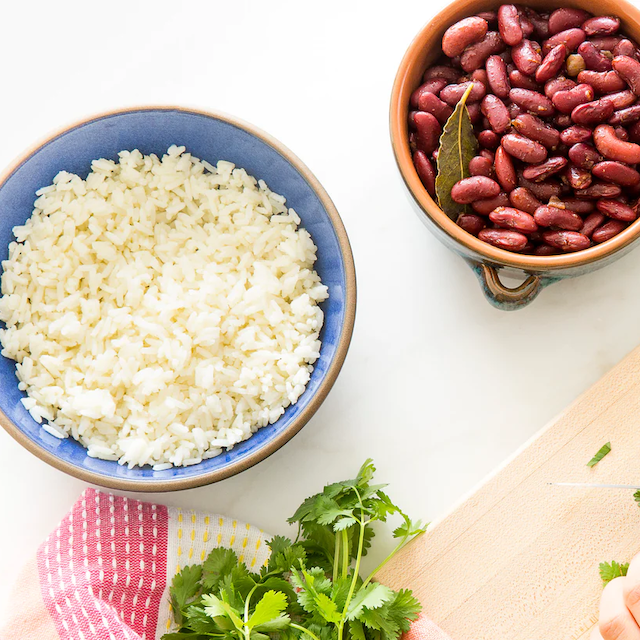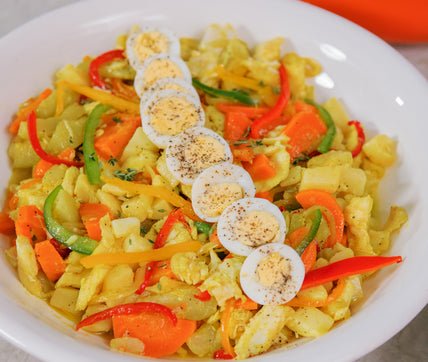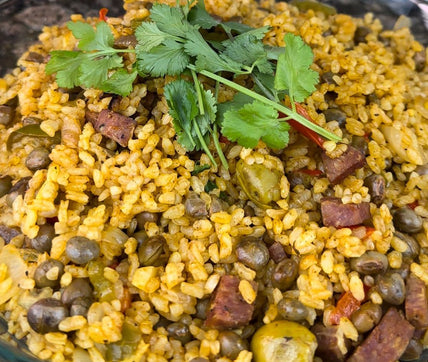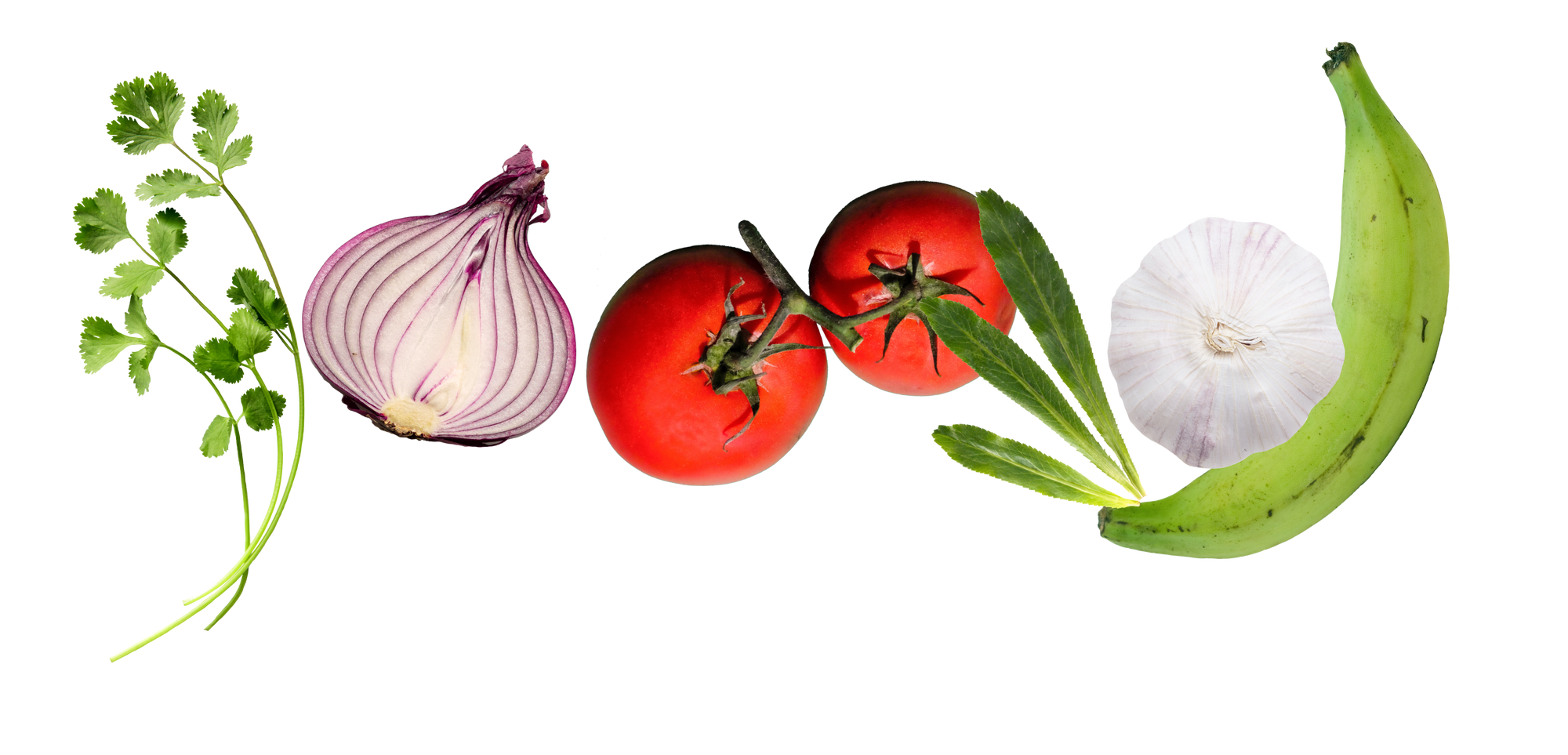
How to Get the Most Out of Our Rice & Beans
NTP Mariu Cabral shares with us tips for getting the most out of our rice and beans.
By: Mariu Cabral, NTP | @mariucabral
Mariu Cabral is a Nutritional Therapy Practitioner (NTP) who specializes in the gut, particularly Irritable Bowel Syndrome (IBS), acid reflux, and chronic gastrointestinal diseases. She was born in Venezuela to a Venezuelan mother and a Dominican father. After moving to New York at the age of 19, she quickly realized how much of the foods she grew up with were considered "unhealthy" and "greasy" by American standards. Years later, when she became a nutritionist she learned about the cultural biases in dietary guidelines and is now on a mission to empower Latinxs to eat and enjoy our cultural foods because they are healthy, sustainable, and delicious!
Have you been swapping your grandma’s locrio for cauliflower rice? Or your breakfast arepas for avocado toasts? Welp, I am a Certified Nutritionist who specializes in gut health, and I am here to tell you - there’s no need for that.
There’s a misconception that to be healthy, you have to eat kale salads and tasteless chicken. But when it comes to our traditional Latin foods, most are quite healthy – when prepared right.
For example, we tend to think of rice as just a “carb”, but in reality, rice is an important source of nutrients, such as manganese and resistant starch - the former is an essential mineral that supports skin and bones, and the latter fuels our intestinal flora and helps us stay happy and regular. Add some beans to the plate and you also have a great source of protein, fiber, and folate. We don't need to replace the heritage foods we love to eat nutritiously, we just need to source and prepare them properly to reach their full nutritional benefits!
Rice & Beans – the Bad & the Good
Let's keep talking rice and beans.
Generally speaking, grains (rice) and legumes (beans) may contain compounds called anti-nutrients. The most common anti-nutrients are phytic acid & lectins – compounds that can bind to minerals and prevent them from absorbing into the body, which can lead to nutrient deficiencies. Anti-nutrients can also permeate the intestinal wall and cause a leaky gut – a condition that may lead to low-grade inflammation like bloating, abdominal pain or other adverse health conditions like Celiac's disease.
Similarly, depending on where and how rice is farmed, it may contain high levels of arsenic. Inorganic arsenic, the kind that is toxic for humans, is found in pesticides, herbicides, industrial waste, coal burning, and more. It also finds its way into the groundwater that is used to irrigate crops. Since growing rice requires high amounts of water, rice absorbs more arsenic than any other food. This is why rice, in particular, is a concerning food when it comes to arsenic. Aromatic varieties of rice such as basmati or jasmine rice contain lower levels of arsenic. It's important to note that washing rice with filtered water before cooking "may remove 10–28% of the arsenic."
So, with all this bad stuff going around, how do we ensure the rice & beans we consume are giving us all the positive nutrition benefits I mentioned earlier? This is where sourcing quality ingredients and prepping them correctly matters. Organic, non-GMO foods and products contain fewer or no residues of pesticides and herbicides. Purchasing organic and non-GMO rice and beans is a significantly better choice to get the most out of your meal.
To take things a step further, preparing your rice and beans by soaking and sprouting them helps to reduce anti-nutrients and unlock their significant nutritional benefits. You may have seen your abuela soaking dried beans, but would rather skip that step, or maybe have just gotten accustomed to purchasing canned beans. When you take the time to soak and sprout grains and legumes, you can prevent anti-nutrients from binding to our very precious minerals, thus minimizing the adverse compounds, and empowering you to enjoy the foods you love without causing the gas or bloating you may get after eating a bowl of arroz y habicheulas.
Simply put, soaking and sprouting your rice and beans mimics the soil (their natural environment), so the plant feels "safe" to release those anti-nutrients. You can soak and sprout any type of bean, rice, and other grains like quinoa. For a downloadable guide on how to soak and sprout grains and legumes, click here.
Improving the Nutrition of Our Guisados
Our guisados or estofados contain virtually every nutrient, given that the ingredients we put into them are so diverse – meat and bones are a great source of minerals, collagen and protein, while vegetables provide important vitamins, minerals, and complex carbohydrates. Additionally, spices like cumin and turmeric that we use to season our stews can have positive anti-inflammatory and digestive benefits. That being said, our heritage dishes have gotten a bad rap when it comes to their healthfulness and we continue to see diet-related health issues such as diabetes run rampant in our communities. Contributing to this is the fact that many common condiments and spices contain unnecessary additives that are linked to adverse health effects. This is where sourcing the right ingredients can again help us improve the nutrition of our food.
Let's take sazón, for example – a staple seasoning that adds irresistible flavor and beautiful color to many of our guisados. When abeula used to make her own sazón from scratch, she used real, natural ingredients: onions, garlic, achiote, oregano, and unrefined salt. "Big Food" companies have since stepped-in to bring convenience to our homes, but without the same care in making their products with the best ingredients. These mass-produced products may taste similar to what we grew up with, but often include added sodium, chemicals, and artificial ingredients to activate our tastebuds. Sazón from Big Brands for example, can contain artificial dyes like Yellow-5 and Red-40 which can have harmful long-term effects on our health. How to we avoid this? Opt for organic, non-GMO seasonings that use all natural ingredients. For example, Loisa Sazón is USDA certified organic and is made with only pure spices and sea salt.
All in all, our heritage foods are naturally bursting with essential nutrients and minerals that we need to stay maintain a healthy diet and feel good. Eating healthy doesn't mean we have to abandon the flavors and dishes that we grew up eating, we just need to paying extra attention to what we're putting in the pot. Taking a little more time to source and prepare our ingredients the right way helps us get the most out of food we love.



